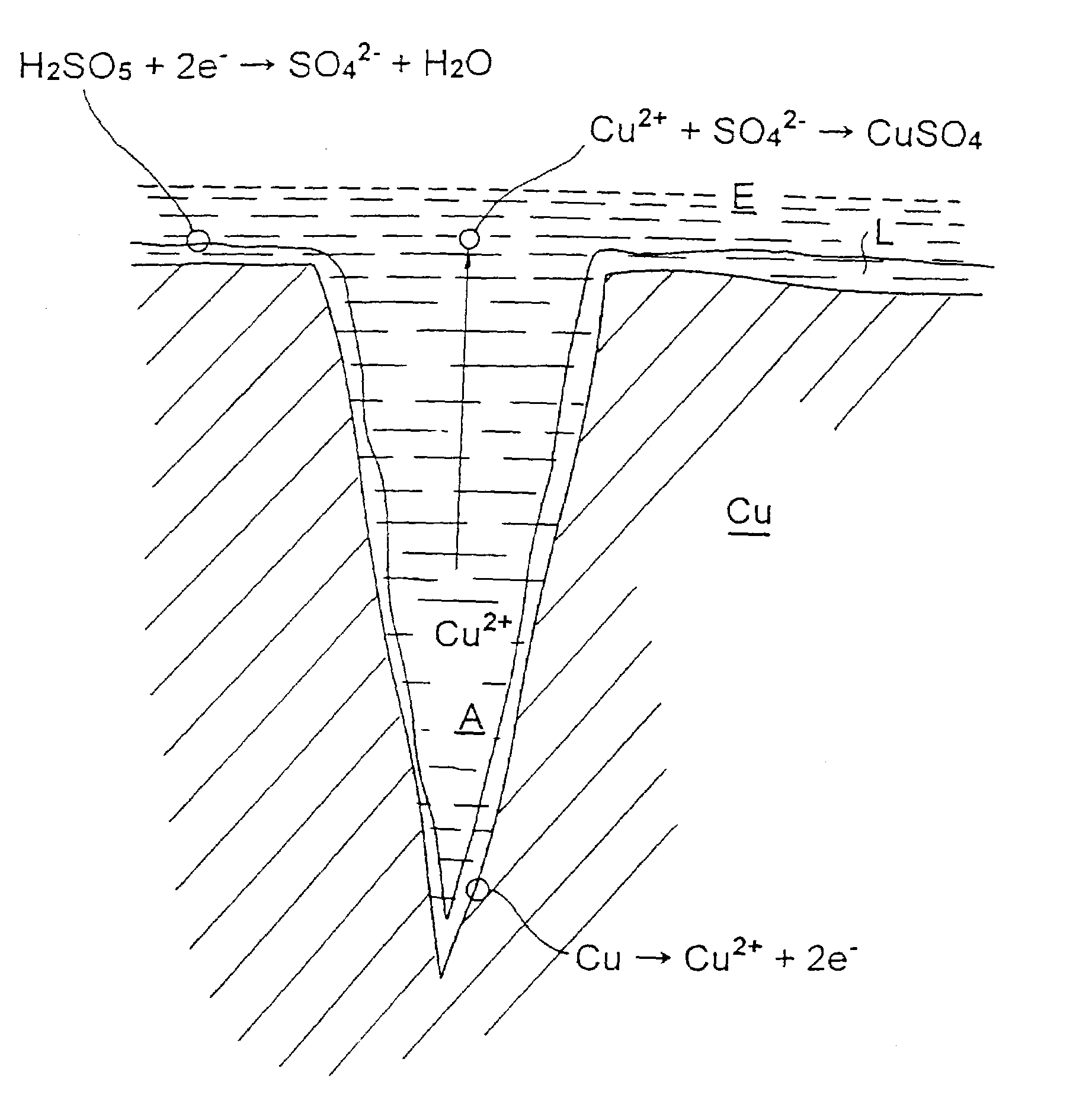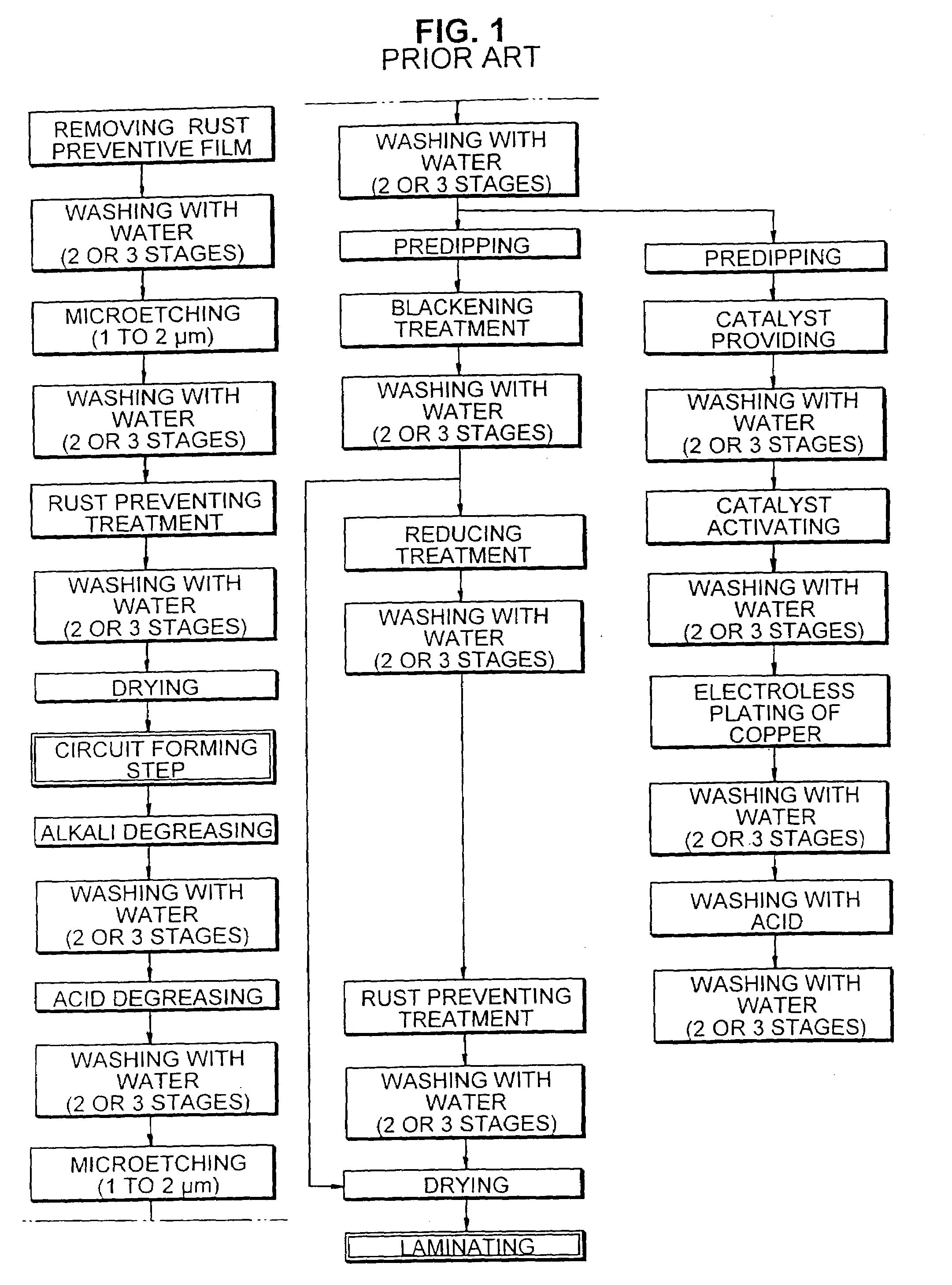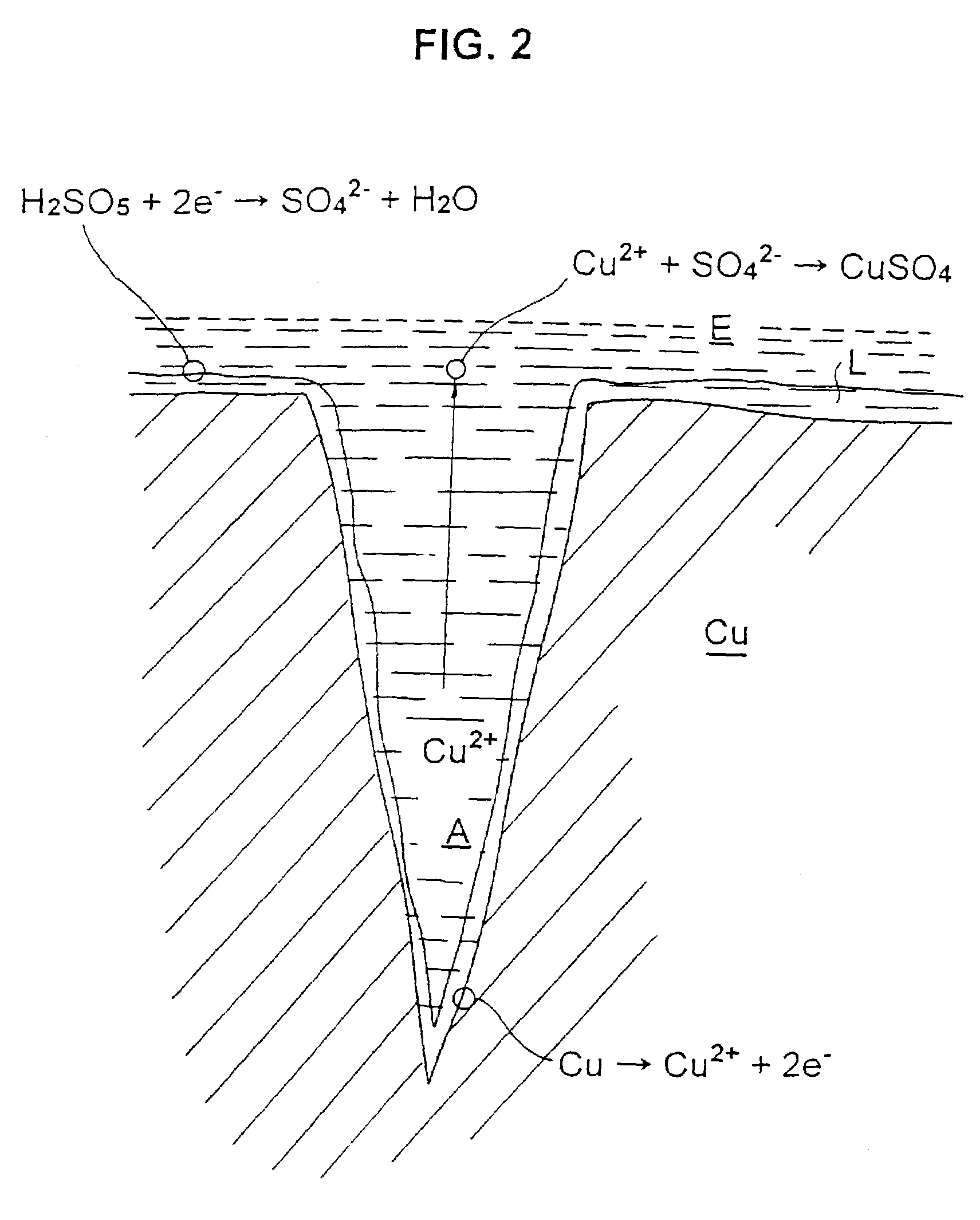Etchant, method for roughening copper surface and method for producing printed wiring board
a technology of copper surface and printed wiring board, which is applied in the direction of paper/cardboard articles, cable/conductor manufacturing, and metal adhesion improvement of insulating substrates. it can solve the problems of pink ring on the conductive pattern layer, increase the manufacturing cost first process encounter serious problems. , to achieve the effect of reducing the number of steps in manufacturing of printed wiring board, increasing acid resistan
- Summary
- Abstract
- Description
- Claims
- Application Information
AI Technical Summary
Benefits of technology
Problems solved by technology
Method used
Image
Examples
example 1
[0051]First, a first aqueous etching solution or etchant having such a composition as shown in Table 1 described below was prepared.
[0052]
TABLE 1(Temperature: 20° C.)H2O225 g / lH2SO490 g / l
[0053]A surface of a copper-clad laminate made of epoxy resin filled with a glass fabric was dipped in the thus-prepared etchant for 1 minute to remove a rust preventive film from the surface. Then, the laminate was dipped for 5 minutes in a second etching solution or etchant having such a composition as shown in Table 2 described below, to thereby be subjected to etching, resulting in the surface of the laminate being roughened.
[0054]
TABLE 2(Temperature: 25° C.)H2O280g / lH2SO490g / lBTA5g / lNaCl0.2g / l
[0055]Then, the copper surface of the copper-clad laminate thus etched was observed by means of a scanning electron microscope (SEM). As a result, it was found that the surface is formed thereon with fine acicular protrusions as shown in FIGS. 4A and 4B. Also, a section of the copper-clad laminate was obse...
example 2
[0057]A surface of a copper-clad laminate made of epoxy resin filled with a glass fabric was dipped in the etchant shown in Table 1 for 1 minute to remove a rust preventive film from the surface as in the Example 1. Then, the laminate was dipped for 5 minutes in a third etching solution or etchant having such a composition as shown in Table 3 described below, resulting in the surface of the laminate being roughened.
[0058]
TABLE 3(Temperature: 25° C.)K2SO5250g / lH2SO490g / lBTA5g / lNaCl0.2g / l
[0059]As will be noted from Tables 2 and 3, the third etchant was substantially the same as the second etchant except that potassium peroxomonosulfate (K2SO5) was substituted for hydrogen peroxide (H2O2).
[0060]The copper surface was likewise subjected to SEM observation. As a result, it was found that the surface is formed thereon with such protrusions as shown in FIGS. 7A and 7B, resulting in being roughened. Comparison of Example 2 with Example 1 indicated that roughening of the copper surface in Ex...
example 3
[0062]A surface of a copper-clad laminate made of epoxy resin filled with a glass fabric was dipped for 1 minute in the etchant shown in Table 1 to remove a rust preventive film from the surface as in Examples 1 and 2 described above. Then, the laminate was dipped for 5 minutes in a fourth etching solution or etchant having such a composition as shown in Table 4 described below, resulting in the surface of the laminate being roughened.
[0063]
TABLE 4(Temperature: 25° C.)H2O280g / lHClO4150g / lBTA5g / lNaCl0.2g / l
[0064]As will be noted from Tables 2 and 4, the fourth etchant was substantially the same as the second etchant except that perchloric acid (HClO4) was substituted for sulfuric acid (H2SO4). The copper surface was likewise subjected to observation by means of the SEM. As a result, it was found that the surface is formed thereon with such protrusions as shown in FIGS. 8A and 8B, resulting in being roughened.
[0065]Then, the copper-clad laminate having the surface thus roughened was li...
PUM
| Property | Measurement | Unit |
|---|---|---|
| Length | aaaaa | aaaaa |
| Time | aaaaa | aaaaa |
| Concentration | aaaaa | aaaaa |
Abstract
Description
Claims
Application Information
 Login to View More
Login to View More - R&D
- Intellectual Property
- Life Sciences
- Materials
- Tech Scout
- Unparalleled Data Quality
- Higher Quality Content
- 60% Fewer Hallucinations
Browse by: Latest US Patents, China's latest patents, Technical Efficacy Thesaurus, Application Domain, Technology Topic, Popular Technical Reports.
© 2025 PatSnap. All rights reserved.Legal|Privacy policy|Modern Slavery Act Transparency Statement|Sitemap|About US| Contact US: help@patsnap.com



